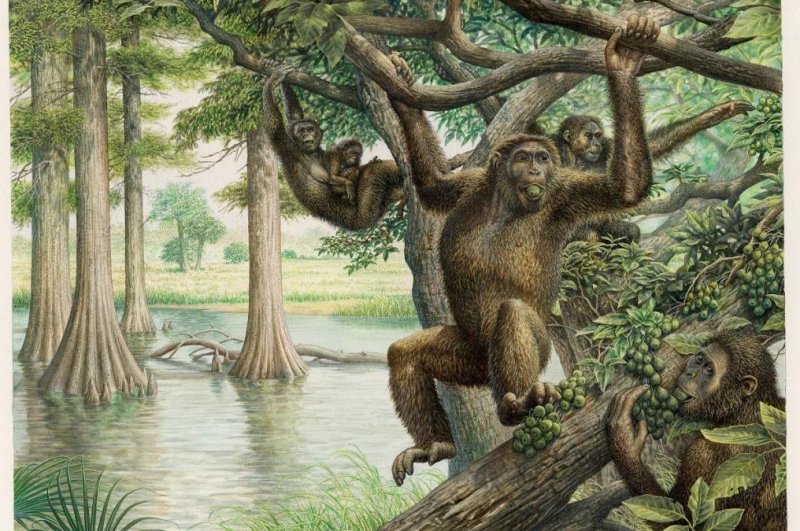New research suggests the pelvis and lower back of an ancient European ape species allowed it to hold itself upright on two legs. Photo by John Siddick
Sept. 18 (UPI) -- An ancient ape pelvis recovered in Hungary suggests bipedalism has deeper evolutionary roots than previously thought.
The 10-million-year-old fossilized pelvis bone belongs to Rudapithecus hungaricus, a large-bodied ape that lived in Europe during the late Miocene. Previous analysis of the species' jaws and limbs suggest the ape was a relative of modern African apes and humans.
Pelvic bones are rarely preserved, but the bones can offer important insights into a species' locomotion and posture. The newly recovered pelvis bound, found in Rudabánya, Hungary, by a team of anthropologists, suggests Rudapithecus had the ability to walk on two legs.
"Rudapithecus was pretty ape-like and probably moved among branches like apes do now -- holding its body upright and climbing with its arms," Carol Ward, a professor of pathology and anatomical sciences at the University of Missouri School of Medicine, said in a news release. "However, it would have differed from modern great apes by having a more flexible lower back, which would mean when Rudapithecus came down to the ground, it might have had the ability to stand upright more like humans do."
Ward is the lead author of a new paper detailing the evolutionary implications of the rare ape-like pelvis bone, published this week in the Journal of Human Evolution.
"This evidence supports the idea that rather than asking why human ancestors stood up from all fours, perhaps we should be asking why our ancestors never dropped down on all fours in the first place," Ward said.
With a long pelvis and short lower back, Africa's modern apes have no choice but to remain on all fours. Humans are able to stand and walk on two legs thanks to a longer, more flexible lower back. According to Ward, the evolutionary gap between the pelvis and lower back of humans and African apes is greater than the gap between the anatomy of humans and Rudapithecus.
"We were able to determine that Rudapithecus would have had a more flexible torso than today's African apes because it was much smaller -- only about the size of a medium dog," Ward said. "This is significant because our finding supports the idea suggested by other evidence that human ancestors might not have been built quite like modern African apes."
In future studies, Ward and her colleagues hope to conduct a 3D analysis of other Rudapithecus bones gain a fuller picture of how the ape moved.















